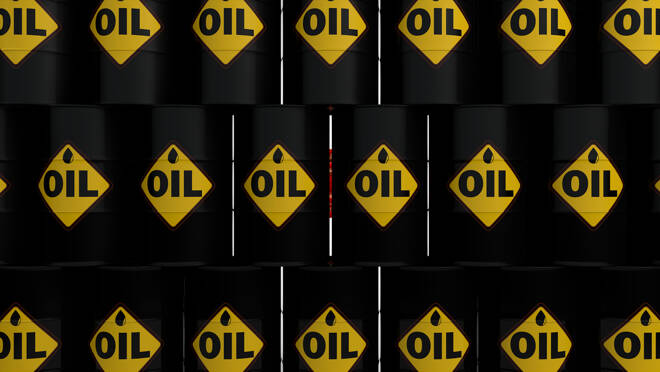Advertisement
Advertisement
Oil Price Fundamental Daily Forecast – Low Volatility Setting Up Market for News Driven Breakout
By:
The sideways price action is driving down volatility and when volatility drops, traders should start watching for a news event that fuels a breakout move.
U.S. West Texas Intermediate and international-benchmark Brent crude oil futures are nudging lower on Tuesday as renewed concerns over lower demand are offsetting hopes of a timely U.S. stimulus deal. Traders are also worried about increased supply from Libya and Iran despite the strict adherence to the OPEC+ production cuts.
At 09:04 GMT, December WTI crude oil is trading $40.51, down $0.36 or -0.88% and December Brent crude oil is at $42.56, down $0.31 or -0.72%.
Price Action Clearly Indicates Oil Bulls Want New Stimulus
On Monday, crude oil prices rose 1% as global equities rallied on hopes for another U.S. stimulus package, but rising virus cases fed concerns about fuel demand and kept oil futures from moving higher.
Oil followed Wall Street higher as American political talks continued for another COVID-19 relief bill after U.S. House Speaker Nancy Pelosi on Sunday said she thought a deal could be reached with the White House.
On Monday night, Pelosi said that the Democrats were unveiling a new $2.2 trillion stimulus package, smaller than the more than $3 trillion proposed earlier in the crisis but still well above what Republican leaders have offered. The new bill would include enhanced unemployment benefits and aid to airlines and state and local governments, according to a summary.
The negative response to the new proposal suggests that traders doubt a deal could be reached with Republicans. Last week, the Fed called for the government to do more for the economy, but so far, only the Democrats have took steps toward making the request a reality. The premise is simple for oil traders – more stimulus means more money for the consumer to spend on gasoline.
New Supply Issues Could Cap Gains…
Despite efforts by OPEC and its allies to limit output, more crude is being exported from OPEC producers Iran and Libya.
However, comments from an OPEC official suggest this activity won’t have a long-term effect on supply. OPEC Secretary General Mohammad Barkindo said on Sunday that commercial inventories in QECD countries should stand only slightly above the five-year average in the first quarter of 2021, then fall for the rest of the year.
Short-Term Supply Shock Possible
On Monday, traders were watching for a possible strike in Norway that could lead to lower supply over the short-run. On Tuesday, traders are monitoring one of the heaviest clashes between Armenia and Azerbaijan since 2016. This is reigniting concern about stability in the South Caucasus, a corridor for pipelines carrying oil and gas to world markets.
Daily Forecast
Today’s American Petroleum Institute (API) inventories report, due to be released at 20:30 GMT, could shed some light on the current demand situation.
Five analysts polled by Reuters on average estimate U.S. crude oil inventories rose by 1.4 million barrels in the week to September 25. They expect gasoline stockpiles fell by 1.6 million barrels and distillate inventories, which include diesel and jet fuel, fell by 800,000 barrels.
The sideways price action is driving down volatility and when volatility drops, traders should start watching for a news event that fuels a breakout move. One such event could be a larger-than-expected drop in distillate inventories. Others include a supply shutdown in Norway or an oil and gas export disruption in Azerbaijan.
For a look at all of today’s economic events, check out our economic calendar.
About the Author
James Hyerczykauthor
James is a Florida-based technical analyst, market researcher, educator and trader with 35+ years of experience. He is an expert in the area of patterns, price and time analysis as it applies to futures, Forex, and stocks.
Did you find this article useful?
Latest news and analysis
Advertisement
